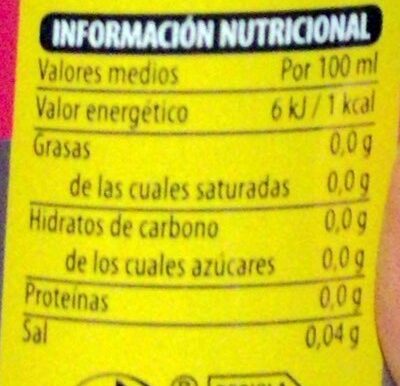Tinto de verano 0% sabor lemon - Casón histórico - 6 x 330 ml
Aquesta pàgina del producte no està completa. Podeu ajudar a completar-la editant-la i afegint-hi més dades a partir de les fotos ja disponibles, o fent-ne més amb l'aplicació de androide o iPhone / iPad. Gràcies!
×
Codi de barres: 8480000667427 (EAN / EAN-13)
Nom comú: Bebida refrescante aromatizada, con edulcorantes, sin alcohol ni azúcares
Quantitat: 6 x 330 ml
Empaquetament:
en:Green dot
Marques: Casón histórico
Categories: Begudes, Begudes ensucrades artificialment, Begudes sense alcohol
Etiquetes, certificacions, premis:
Sense o baix en sucre, Punt verd, Sense alcohol, Sense sucre, Amb edulcorants
Botigues: Mercadona
Països on es va vendre: Espanya
Matching with your preferences
Entorn
Empaquetament
Transport
Report a problem
Fonts de dades
Producte afegit per kiliweb
Última modificació de la pàgina del producte per alia.
La pàgina del producte, també editada per yuka.sY2b0xO6T85zoF3NwEKvlkZNb8biviqZN0LQoHXU3ubTFpvvPdJfs9DXN6s, yuka.sY2b0xO6T85zoF3NwEKvlkpBaODGoxDFJjbQpG675ty3D83DQess4qLfKKg.









